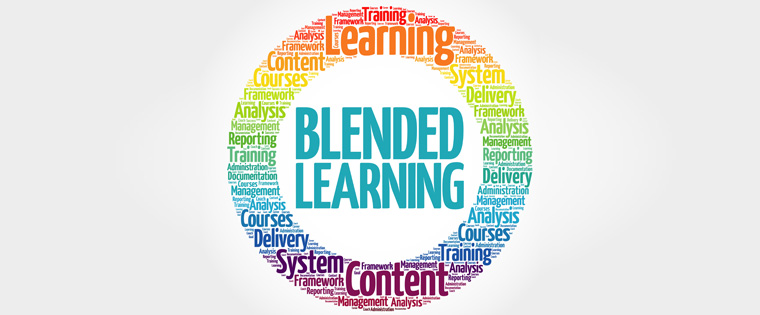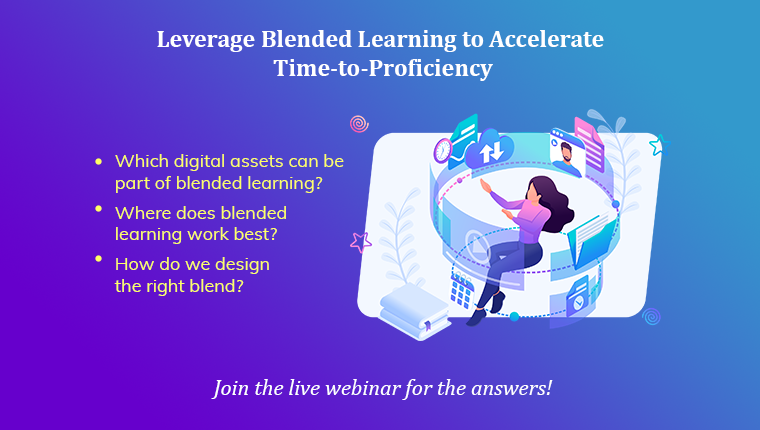5 Best Practices of Implementing Blended Learning

Hybrid learning – a learning methodology that combines the flexibility of technology-enabled learning with the benefits of human interaction afforded by a classroom. A right blend of online courses and instructor-led sessions goes a long way in imparting highly effective training.
5 Best Practices for Blended Learning Implementation
- Move theory online
- Analyze learners and their work environment
- Design the blend based on learning outcomes
- Utilize a learning management system
- Document the drivers, resources needed, and other details
How can you formulate the right hybrid learning strategy? What does it take to harness the full potential of blended learning? Well, here are five sure-shot tips to come up with a winning learning blend.
5 Tips to Implement an Effective Blended Learning Strategy
1. Move as Much of Your Content Online as You Can
It is a hybrid learning best practice to deliver only critical content in a classroom. Optimize the time spent in the classroom by moving content related to basic concepts of the subject-matter, online. Once learners complete the fundamentals, conduct an instructor-led session for advanced topics and/or practice.
One of our clients in the automobile industry uses video-based e-learning courses to impart basic training on its products to service technicians. After the staff members complete the courses, they need to attend a four-day workshop for advanced training on the products and hands-on practice.
Plan for and implement eLearning successfully in your organization.
2. Conduct a Thorough Analysis of Learners and Their Work Environment
You need to design your blended learning strategy based on the work environment and learning preferences of your employees. Make sure you survey the needs of your staff and learning formats they prefer before coming up with a hybrid learning approach. The advantages of conducting the survey are two-fold. Your learners will feel their voice is heard, leading to better acceptance of the learning initiative. Second, you can create a learning blend which meets their learning needs effectively.
For instance, one of our clients in the pharmaceutical space found that most of its medical reps wanted to access product literature on their iPads. The firm responded by creating an online learning portal that could be accessed through tablets. This initiative of the drug maker proved to be very popular and successful.
3. Design the Learning Blend Based on the Learning Outcomes
Achieving the desired learning outcomes must be at the core of your hybrid learning strategy. When you come up with a blended learning approach, give precedence to meeting learning objectives over a specific format or technology. For instance, when you design a blended learning program for your customer service reps, be guided by its objective i.e., equipping reps with the ability to deal effectively with customers. The objective can be met through a blend of instructor-led sessions and online simulations of customer interactions.
4. Unleash the Power of Your Learning Management System (LMS)
Make the best use of your LMS to implement the blended learning strategy. You can use the LMS to perform various tasks such as the following.
- Schedule instructor-led sessions
- Conduct pre-classroom learning activities
- Create a learning content repository
- Reinforce learning
- Facilitate social learning
- Assess learners online
- Generate reports to analyze the learning
5. Document the Blended Learning Initiative
Don’t forget to document the following details when you formulate a hybrid learning strategy.
- Corporate drivers for blended learning
- Learning outcomes of the hybrid learning program and profile of the learners
- Information about each blended learning element — its description, mode of delivery, and the time required to complete it
- People needed to implement the learning blend and their responsibilities
- Financial resources required to implement the hybrid learning initiative
Good documentation leaves no room for ambiguity in formulating the blended learning strategy, ensuring its successful execution.
Formulating the right hybrid learning strategy helps you impart the best training to your staff. By following the five best practices listed above, you can create the winning learning blend. How do you blend learning formats? We’d love to know.





